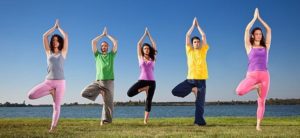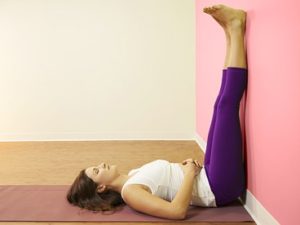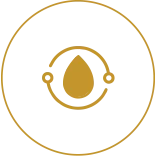You are going through a perfectly normal work day and suddenly, you feel your heart rate go up and irrational panic sets in. Have you been through such unexplained bouts of anxiety at odd times in the day? Well, you are certainly not the only one. Anxiety disorders range from mild to acute and chronic. They affect 40 million adults in the U.S, which is 18% of the population, making it one of the most common mental illnesses in the country.
It takes a toll on the person suffering, mentally, emotionally and physically. According to the American Yoga Association, “The effects of anxiety are magnified when the body is not exercised: tension in the muscles builds, breathing remains constricted most of the time, and the mind has no rest from the whirling thoughts and feelings that feed the anxiety.”
Yoga is known to be a highly helpful mechanism in dealing with anxiety on a day to day basis, with or without medication. While medication may have some side effects, Yoga and spirituality provide a long lasting answer to anxiety disorders without any side effects, except joy and a sense of well-being.
Here we list 5 Yogasanas and then some really workable tips and breathing exercises to face anxiety in a way that it does not impede critical social and work situations, like a big interview or an important exam.
-
Tree Pose or Vrikshasana

- Make a Namaste above the head with both the palms stretched up.
- The left foot should be on the floor straight facing ahead. Knees should not be bent.
- The right foot should be tucked into your left thighs.
- Take 2-3 long deep breaths in this pose before they can relax this posture slowly.
Here is the secret to hold this pose steadily. In this pose, if you look at one specific point in front of the body, you can easily keep your balance longer.
 2. Cat Pose or Marjariasana
2. Cat Pose or Marjariasana
Come on the knees. Both the knees should be 1-2 feet apart. Align them with the hip joints. Knees and ankles are on the floor, palms on the floor in line with shoulders. The upper body should resemble
- Both the knees should be 1-2 feet apart. Align them with the hip joints.
- Knees and ankles are on the floor, palms on the floor in line with shoulders. The upper body should resemble top of the table.
- Take a deep breath in, look up, push your naval towards the floor, squeeze your shoulder blades, so you expand your stomach completely and then,
- as you breathe out, squeeze your stomach in as much as possible. Take your chin to the chest and roll your upper spine in the shoulder blade area.
- Repeat the stretch 5 times.
3. Leg-Up-The-Wall Pose or Viprita Karani
- Sit sideways on the rolled blanket or a rolled yoga mat.
- The right side of your body should be against the wall.
- As you breathe out, turn to the right, lower your shoulders to the floor and puts your legs up against the wall.
- Let your arms support the opening of the front of your chest.
- Stay here in this pose for a few deep breaths.
- To release the posture, slide off the support slowly and keep lying down for a few breaths before gradually sitting up.
4. Child Pose or Bal Asana
- For the child pose,
- bend your knees and bring them to the floor along with your ankles.
- The hips are resting on your legs, your thighs are resting on your legs and your chest is resting on your thighs, your arms are stretched out, and
- slowly take your arms to the sides of your body, palms facing the ceiling.
5. Corpse Pose or Shavasana
- Lie on your back, flat without any support and keep your eyes closed.
- Keep some gap between your legs.
- Place your hands on the sides of your body, slightly away from the body.
- Continue taking deep and long breaths and observe your breaths.
Shavasana is a good segway into Yoga Nidra.
Having felt the stretch in all other parts of the body, now it is time to rest and let the body cells relax. It is very important that after doing asanas, we either finish the session with a soothing guided meditation of Yoga Nidra (Yogic sleep). Without proper rest after the asanas, you miss out on the most important experience of Yoga which is a deep spiritual rest that your body gets, after having exhausted the Rajas Guna in the body through focused activity.
Some Additional Tips And Exercises So That Anxiety Does Not Impede Critical Life Situations
1) Learn the Hm Sound
Close your eyes and sit with either legs crossed or legs planted firmly on the ground if you are sitting on a chair.
- Take a deep breath in and breathe out.
- Again take a deep breath in and then make the Hm sound with force while keeping the mouth shut. Take 5-10 such breaths and each time breathe out while making the Hm sound. The Hm sound is taught in The Art of Living’s flagship Happiness Program along with other powerful tools to manage the mind and emotions.
2) Using Mouth For Out-breaths
-Take a deep long breath through the nostrils in and breathe out through the mouth. Repeat the cycle 5 times. This instantly helps to calm the frayed nerves and the body settles down.
3) Yogic breathing
- Take a very deep and long breath in, then expand the chest, after that expand the stomach, hold it for as long as you can without making a lot of effort.
- Next, slowly as you breathe out, relax the stomach first and then relax the chest.
Repeat this cycle 5 times. Now there might be a tendency to expand and release both chest and stomach together but with awareness you can correct this pattern. The order (Breathe in-expand chest-expand stomach-breathe out-relax stomach-relax cheat) is most important in this breathing practice for it to work.
4) Bhramari or Bumble Bee breathing
- Breathe in from your nostrils and breathe out from the mouth very slowly. (5-10 times)
- Sit with eyes closed, hands on the knees, palms facing the sky.
- Take a deep breath in and make a humming sound like a bee. (5 times)
With every breath out, make the humming sound and keep relaxing more and more. This breathing exercise makes the intellect sharper and clears the mind.
Disclaimer: This article is only for informative purposes. It is strongly recommended for children and adults to learn and practice these asanas under the guidance and supervision of a trained and certified Sri Sri Yoga faculty.










